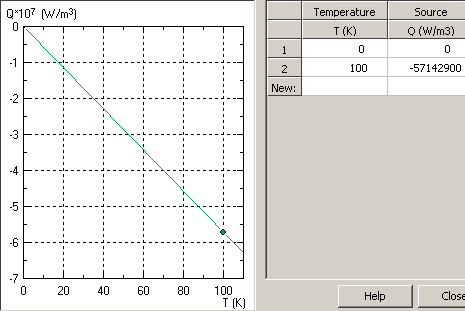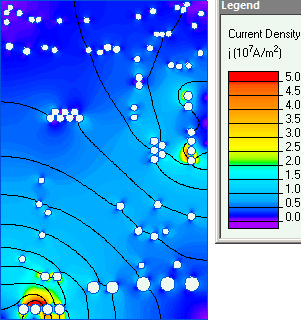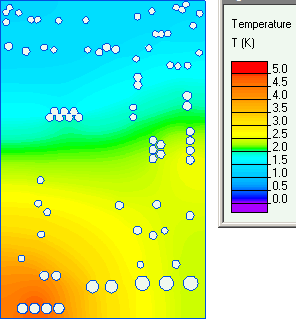PCB ground plane heating
QuickField simulation example
The voltage is applied to the sides of conducting sheet placed vertically and surrounded by the still air. The flowing current heats the sheet due to resistive losses. The front and back surfaces of the sheet are cooled by the air (natural convection).
Problem Type
Plane-parallel multiphysics problem of DC Conduction coupled to Steady-state heat transfer.
Geometry
Given
Sheet thickness d = 0.035 mm;
Material resistance ρ = 2·10-8 Ohm/m;
Current I = 10 A;
Material heat conductivity λ = 380 W/K-m;
Convection coefficient α = 10 W/K-m²;
Task
Calculate the temperature and potential distribution in a conducting sheet.
Solution
The resistive losses are calculated in the DC conduction problem. Then these losses are transferred to the linked heat transfer problem.
The pcb_current.pbm is the problem of calculating the current distribution, and pcb_heat.pbm analyzes temperature field.
The sheet is cooled by convection from the front and back surface (total) f(T) = -α·(T - T0)·(Afront + Aback), where α is a convection coefficient, and T0 is an ambient temperature, Afront, Aback - area of front and back surfaces, respectively.
The convection from other surfaces is ignored. The convection is modelled by the volume heat sink Q(T) = -k·T, where coefficient k = 2α/d.

Results
Potential distribution and current paths in the pcb

Temperature distribution in the pcb (overheating)

- Video: PCB ground plane heating. Watch on YouTube
- View simulation report in PDF
- Download simulation files (files may be viewed using any QuickField Edition).